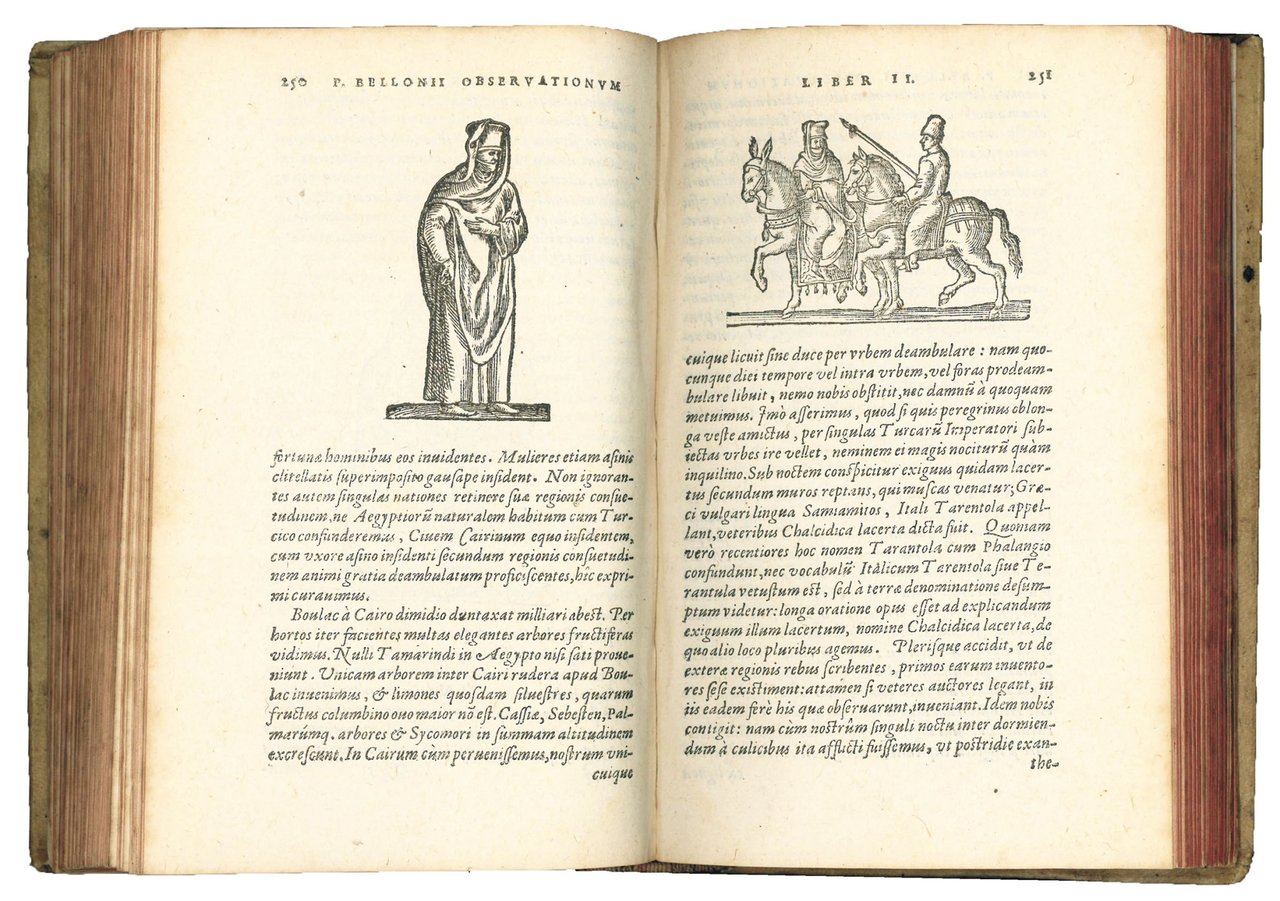
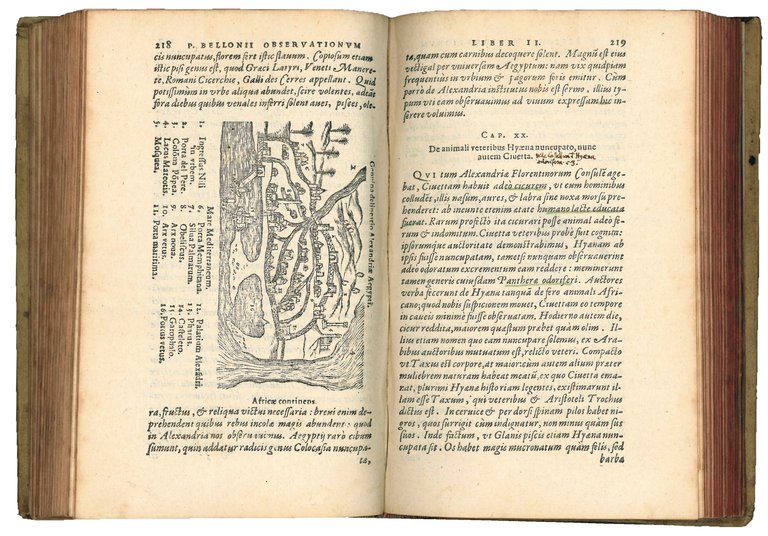
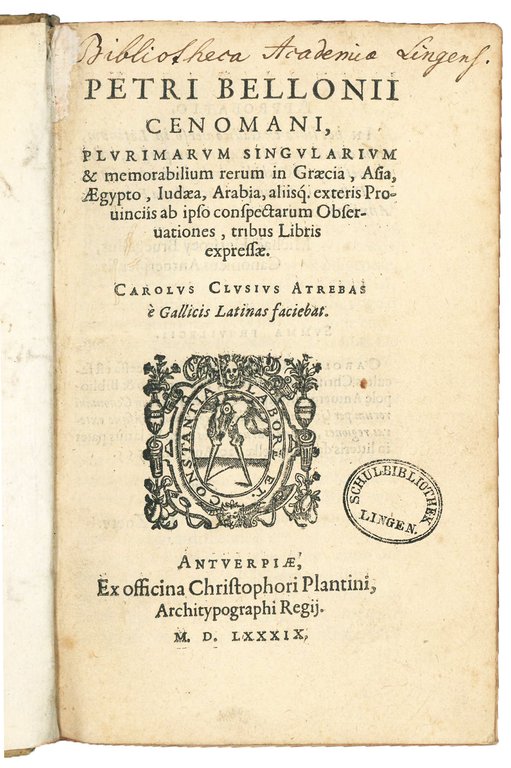
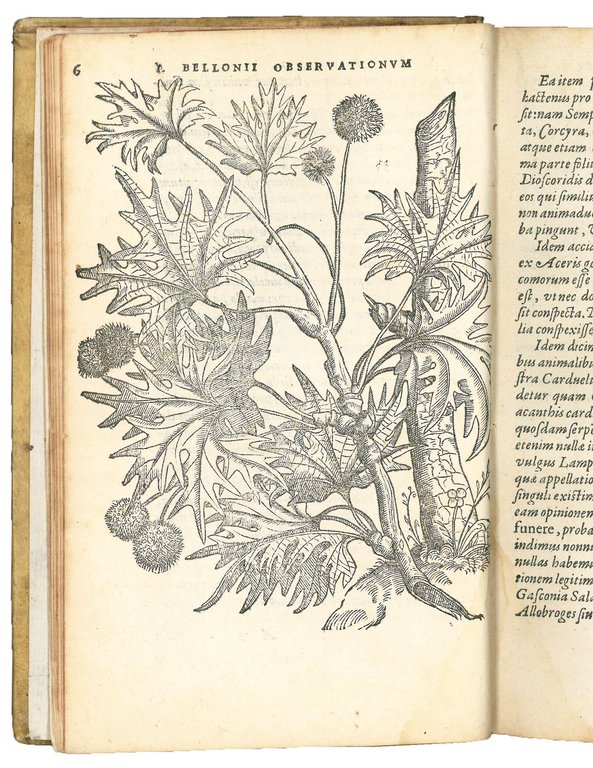
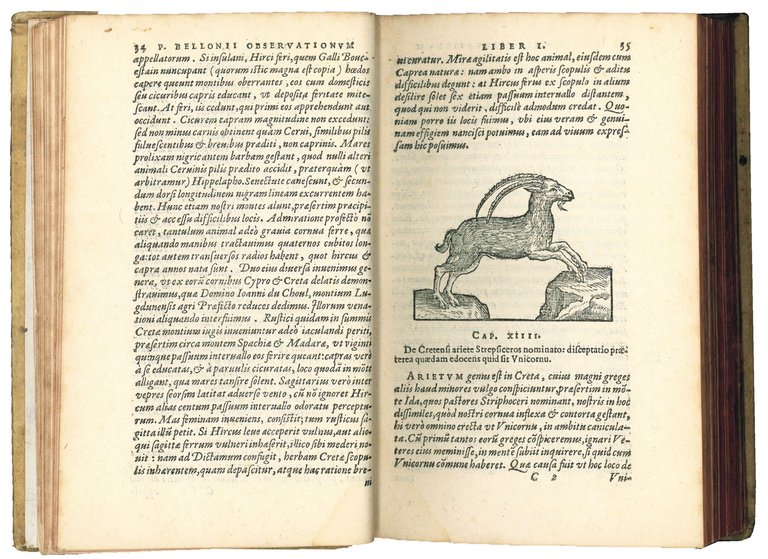
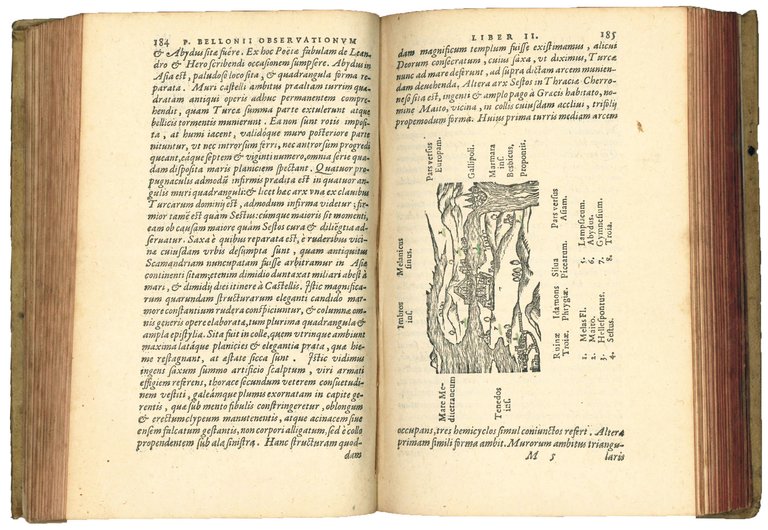
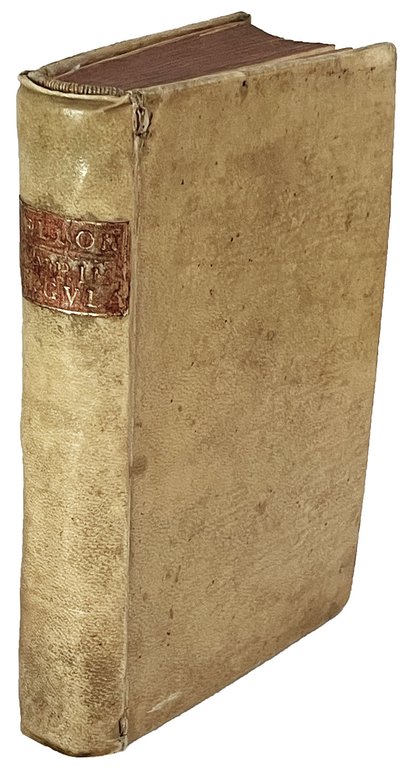
Libri antichi e moderni
BELON, Pierre (1517-1564)-L''ECLUSE, Charles de, tr.-ed. (1526-
Petri Bellonii Cenomani, Plurimarum singularium & memorabilium rerum in Graecia, Asia, Aegypto, Iudaea, Arabia, aliisque exteris provinciis ab ipso conspectarum observationes, tribus libris expressae. Carolus Clusius Atrebas e Gallicis Latinas faciebat
Christophe Plantin, 1589
2300,00 €
Govi Libreria Antiquaria
(Modena, Italia)
Le corrette spese di spedizione vengono calcolate una volta inserito l’indirizzo di spedizione durante la creazione dell’ordine. A discrezione del Venditore sono disponibili una o più modalità di consegna: Standard, Express, Economy, Ritiro in negozio.
Condizioni di spedizione della Libreria:
Per prodotti con prezzo superiore a 300€ è possibile richiedere un piano rateale a Maremagnum. È possibile effettuare il pagamento con Carta del Docente, 18App, Pubblica Amministrazione.
I tempi di evasione sono stimati in base ai tempi di spedizione della libreria e di consegna da parte del vettore. In caso di fermo doganale, si potrebbero verificare dei ritardi nella consegna. Gli eventuali oneri doganali sono a carico del destinatario.
Clicca per maggiori informazioniMetodi di Pagamento
- PayPal
- Carta di Credito
- Bonifico Bancario
-
-
Scopri come utilizzare
il tuo bonus Carta del Docente -
Scopri come utilizzare
il tuo bonus 18App
Dettagli
Descrizione
First Latin edition of Belon's account of his voyage through the Levant. The original French text, first appeared in Paris in 1553 as Les Observations de plusieurs singularitez & choses memorables, trouvées en Grèce, Asie, Iudée, Egypte, Arabie, & autres pays estranges, was translated by the great botanist Carolus Clusius, formerly director of the botanical garden of the Holy Roman Emperor Maximilian II at Vienna and later of that of Leiden University, who also contributed with additional notes.
The work received wide attention and Plantin reprinted the French version at Antwerp in 1555. Pieter van der Borcht and Gerard Janssen van Kampen made the woodcuts for the present edition after those of Plantin's 1555 edition, whose woodblock were not available anymore as they had been sold at auction in 1562. They depict plants, trees, animals, local people, a map of Turkey and a view of Alexandria. Plantin's grandson published a second Latin edition of the work at Leiden in 1605.
From 1546 to 1550 Belon undertook a long journey through Greece, the Greek Islands, Alexandria, Lower Egypt, Judea, Lebanon, Syria, and Turkey. He passed through Constantinople and Rome, where he met the zoologists Rondelet and Salviani (cf. J.P. Tricot, The voyage in 1547 to Stamboul (Constantinople) by the pharmacist-naturalist Pierre Belon from Mans, in: “Histoire des sciences médicales”, April-June 2004, 38.2, pp. 191-198).
“Belon enriched the biological sciences by new observations and contributed greatly to the progress of the natural sciences in the sixteenth century. His learning was not derived solely from books. He was one of the first explorer-naturalists […] Belon was also a talented botanist and recorded the results of his observations in a beautiful work adorned with woodcuts showing, for the first time, several plants of the Near East, including Platanus orientalis, Umbilicus pendulinus, Acacia vera, and Caucalis orientalis. He was more interested in the practical uses of plants than in their scientific description. He also advocated the acclimatization of exotic plants in France […] Belon's observations were generally correct. He looked at the world as an analyst devoted to detail. He succeeded in winning the confidence of the great and was famous during his lifetime. His works were translated by Charles de l'Escluse and Ulisse Aldrovandi, both of whom recognized his authority” (D.S.B., I, pp. 595-596).
In the Observationes Belon also makes interesting remarks on the religion and customs of the local population and on ancient buildings and other antiquities.
Pierre Belon came from a modest family originally from Souletière. At a young age, he became an apothecary in the service of Guillaume Duprat, the Bishop of Clermont, and subsequently of the Archbishop of Le Mans, René du Bellay. In 1542, he began working for the Archbishop of Lyon, François de Tounon. This enabled him to devote himself entirely to scientific research and travel. In Wittenberg, he attended the lectures of the renowned botanist Valerius Cordus (1515-1544) and accompanied him on several trips to north-central Europe. In 1546, he undertook his first major naturalistic expedition in the Middle-East. Upon returning to France in 1549, Henry II granted him a pension of two hundred scudi, enabling him to work with more serenty and independence. Later Charles IX installed him at the Château de Madrid and granted him a pension. In 1551, he p

